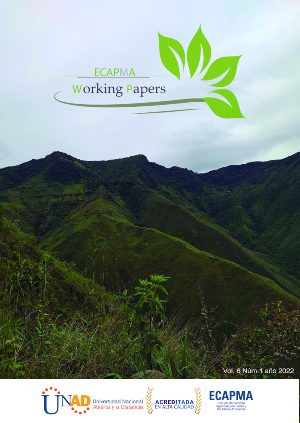Vegetable coverage in scattered trees located in agricultural properties of the road corredor Bogotá – Villavicencio
Contextualization: Trees scattered in rural and agricultural properties and in areas belonging to strategic ecosystems, fulfill functions of great ecological relevance, serving as a basis for improving connectivity between forest and vegetation patches of different successional stages.
Knowledge gap: While it is true, the expansion of the agricultural frontier for the establishment of productive activities, has in certain cases generated ecosystem fragmentation, it has also led to the presence of patches and remaining arboreal individuals of native and exotic species, leading to a new ecological configuration of the territory, which must be studied for the correct planning of rural areas with an integral vision and under sustainability approaches.
Purpose: his study made it possible to analyze the vegetation cover of trees scattered in rural properties with productive and agricultural functions in 32 farms located in the municipalities of Chipaque, Cáqueza, Quetame and Guayabetal, zone of influence of the Bogotá - Villavicencio road corridor, with a view to establishing the plant diversity and cover of tree species.
Methodology: Eight (8) rural properties with agricultural activities were selected for each of the municipalities. The information was collected directly in the field from measurements of areas, coverages and floristic inventories in each of the selected properties, determining the diversity and representativeness in terms of coverage, abundance and frequency.
Results and conclusions: The farms studied have a diversity of native forest species, which outnumber exotic forest species by almost four times; however, the ecological dominance of the latter has a significant ecological impact as a result of their large-scale use and, therefore, a gradual displacement of ancestral, cultural and traditional knowledge of native plants and trees.





